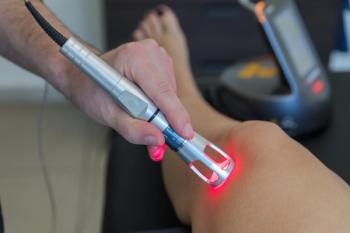
Pruritus therapies: What you’ve been itching to know
The shift from antihistamines to newer drugs for treating pruritus is rapidly accelerating. Gil Yosipovitch, M.D. shares the treatments you should know in his presentation at the Fall Clinical Dermatology Conference in Las Vegas.
The shift from antihistamines to newer drugs for treating pruritus is rapidly accelerating.
“Antihistamines have a very limited role in chronic itch,” says Gil Yosipovitch, M.D., a professor of dermatology and director of the Miami Itch Center at the University of Miami Miller School of Medicine in Florida.
Dr. Yosipovitch, who spoke about pruritus therapies at the Fall Clinical Dermatology Conference, divided itch into three categories:
- Dermatologic itch related to skin diseases and age, which manifests with primary rashes.
- Neuropathic itch, which does not present with a rash and is associated with nerve damage.
- Itch linked to underlying systemic diseases, such as end-stage renal failure, liver disease and lymphoproliferative disorders.
Managing pruritus
The topical phosphodiesterase 4 (PDE4) inhibitor crisaborole 2% can reduce itch caused by atopic eczema and hand dermatitis after two days of application.
Even more effective for atopic itch, dupiliumab, an inhibitor of IL-4 and IL-13, quickly decreases itch before the rash disappears, says Dr. Yosipovitch. The IL-17 inhibitors secukinumab and ixekizumab have also shown very strong anti-itch properties for psoriatic pruritus. These injectables are administered typically once every two weeks.
Additionally, the Janus kinase/signal transducers and activators of transcription (JAK/STAT) inhibitors such as tofacitinib, abrocitinib and upadacitinib have significant anti-itch properties, and can be taken orally.
One topical drug that Dr Yosipovitch uses frequently, which targets the peripheral nerves, is a compounded formulation of ketamine, amitryptiline and lidocaine. “This formulation reduces itch quite significantly, up to seven hours,” says Dr. Yosipovitch, who developed the compounded formulation, which is applied up to four times a day.
Dr. Yosipovitch also commonly uses GABAergic oral drugs like gabapentin and pregabalin that target the nerves transmitting itch. “These drugs reduce neurosensitization,” he says. “They are particularly effective for the neuropathic itch.”
Gabapentin is taken up to four times daily, compared to up to twice daily for pregabalin.
For a localized neuropathic itch, Dr. Yosipovitch sometimes dispenses 0.1% to 1% capsaicin (hot chili pepper). “There is an 8% patch, but it is very expensive and usually not approved by insurances,” he notes.
Patients with systemic itch have an imbalance between mu and kappa opioids. “We all know that mu opioids reduce pain; however, one of their side effects is itch,” Dr. Yosipovitch says.
Since addiction is major concern when using mu opioids, several new kappa opioid agonists and mu antagonists are in clinical trials to reduce itch, but without addictive potential. A butorphanol inhaler is also currently available for use no more than three times a day. Its most common side effect is with drowsiness.
Neurokinin 1 inhibitors, which block the receptors for substance P, also reduce itch by affecting the nerves transmitting itch. The only approved neurokinin 1 inhibitor is aprepitant, whereas serlopitant and tradipitant are in advanced stages of testing. Serlopitant in particular has shown to reduce chronic itch of multiple etiologies, prurigo nodularis and psoriasis.
“Managing the complexities of itch requires a comprehensive approach that includes not just one drug,” Dr. Yosipovitch says. “Often, one drug does not cover all types of itch.”
Disclosures:
Dr. Yosipovitch is a consultant to several companies developing drugs to treat pruritus. He is also the developer of the compounded formulation mentioned in the story.
References:
Yosipovitch G. What you have been itching to know about pruritis therapies. Presented at: 2019 Fall Clinical Dermatology Conference; October 17, 2019; Las Vegas, NV.
Newsletter
Like what you’re reading? Subscribe to Dermatology Times for weekly updates on therapies, innovations, and real-world practice tips.
















